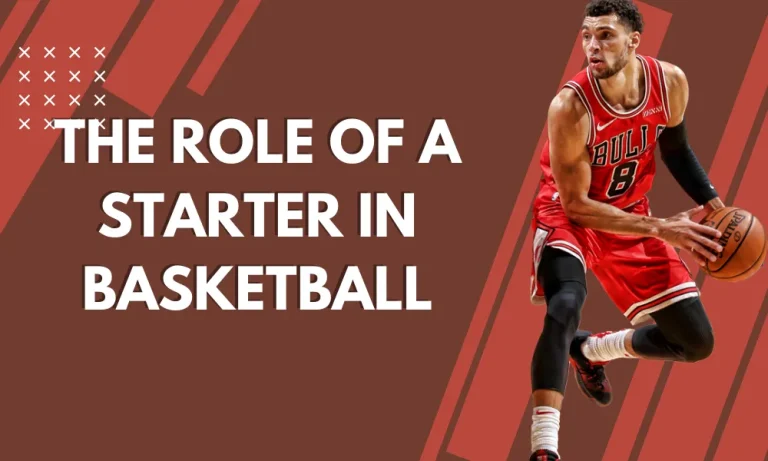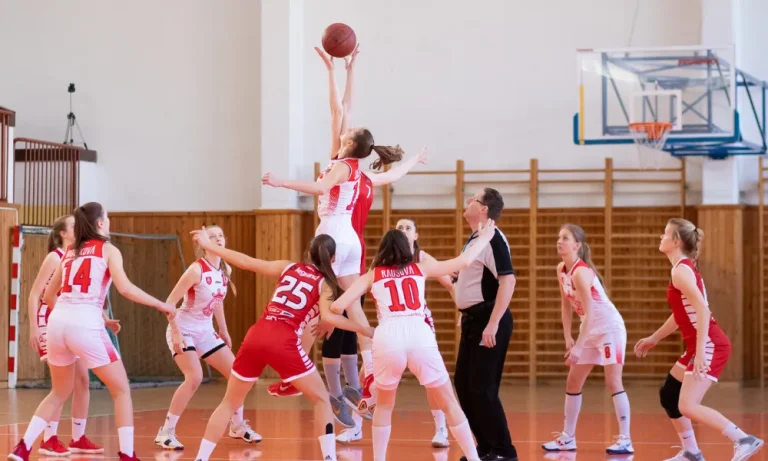What is Up and Down in Basketball?
Have you ever wondered what it means when basketball players talk about “Up and Down”? Well, get ready to score some knowledge because we’re about to unravel the mystery! In this guide, we’ll break down the concept of “Up and Down” in basketball, explaining its importance and how it influences the game.
Understanding the Basic Rules
Basketball is a game that requires not only skill but also a solid understanding of its basic rules. In this section, we will explore the fundamental aspects of the game, starting with an overview of the court layout and key areas.
Court Layout and Key Areas
The basketball court is divided into various sections, each serving a specific purpose. At the center lies the half-court line, which separates the court into two equal halves. This line acts as a boundary for offensive and defensive movements.
The Half-Court Line
The half-court line plays a crucial role in basketball as it dictates the positioning and movements of players. Offensive teams aim to advance beyond this line to establish their presence in the opponent’s territory, while defensive teams strive to prevent their progress.
Role of the Offensive and Defensive Teams
In basketball, there are two teams: the offensive team and the defensive team. The offensive team’s primary objective is to score points by shooting the ball into the opponent’s basket.
On the other hand, the defensive team aims to prevent the offensive team from scoring by blocking shots, stealing the ball, or forcing turnovers.
Overview of Scoring Opportunities
Scoring opportunities arise in various ways during a basketball game. The most common method is shooting the ball into the opponent’s basket, which earns the offensive team two points for a successful shot.
Additionally, free throws and three-point shots offer additional scoring chances.
Offensive Concepts Up in Basketball
Offense is a critical aspect of basketball that requires strategic planning and execution.
Definition of the Offensive “Up”
In basketball, the term “Up” refers to the offensive team’s movement towards the opponent’s basket. It signifies their intent to score points and establish dominance on the court.
Explanation of Offensive Strategies and Movements
Offensive strategies and movements play a pivotal role in creating scoring opportunities. These include setting up plays, passing the ball effectively, and executing various tactics to outsmart the defense.
By utilizing these strategies, the offensive team aims to create open shots and exploit weaknesses in the defense.
Importance of Spacing and Timing
Spacing and timing are crucial elements in offensive play. Proper spacing ensures that players are positioned optimally on the court, allowing for better passing lanes and reducing the risk of turnovers.
Timing, on the other hand, involves executing plays and movements with precision to catch the defense off-guard and create scoring chances.
Role of Ball Handlers, Shooters, and Post Players
Different positions on the offensive team have distinct roles. Ball handlers are responsible for controlling the game’s pace, making accurate passes, and setting up plays. Shooters focus on scoring by shooting from various positions on the court. Post players primarily operate near the basket, using their size and skill to score inside and create opportunities for their teammates.
Utilizing Pick-and-Rolls and Screens Effectively
Pick-and-rolls and screens are essential offensive tactics that involve one player setting a screen to create space for a teammate. This allows the ball handler to drive to the basket or create open shooting opportunities. Effectively utilizing these tactics can lead to successful offensive plays and scoring chances.
Defensive Concepts Down in Basketball
Defense is a fundamental aspect of basketball that can make or break a team’s performance.
Definition of the Defensive “Down”
In basketball, the term “Down” refers to the defensive team’s effort to prevent the offensive team from scoring. It signifies their commitment to stopping their opponents and maintaining control on the court.
Explanation of Defensive Strategies and Movements
Defensive strategies and movements are essential for disrupting the offensive flow and limiting scoring opportunities. This includes maintaining proper positioning, anticipating plays, and applying pressure on the ball handler.
By executing these strategies effectively, the defensive team aims to force turnovers and create challenges for the offense.
Importance of Communication and Positioning
Communication and positioning play a crucial role in defensive success. Effective communication allows defenders to coordinate their efforts, call out screens, and switch assignments.
Proper positioning ensures that defenders are in the right place at the right time, reducing the offensive team’s chances of exploiting gaps or finding open shots.
Role of Defenders in Stopping Offensive Plays
Defenders have the critical task of stopping the offense by closely guarding their assigned opponents. This involves staying focused, reacting quickly to offensive movements, and contesting shots. Good defenders disrupt passing lanes, block shots, and apply pressure to force turnovers.
Defending Against Different Types of Players and Plays
Basketball features a variety of offensive players and plays, each requiring specific defensive approaches. Defenders must adapt their strategies to guard against shooters, penetrators, post players, and pick-and-roll plays.
By understanding their opponents’ strengths and weaknesses, defenders can adjust their tactics accordingly and neutralize the offense.
Transition Game
The transition game is an exhilarating aspect of basketball that requires speed, quick thinking, and teamwork.
Transition Game in Basketball
The transition game refers to the rapid transition from defense to offense or offense to defense when possession of the ball changes. It involves fast breaks, where teams quickly advance the ball up the court to create scoring opportunities before the defense can set up.
The transition game adds excitement and unpredictability to basketball, as players must adapt to the ever-changing flow of the game.
Role of “Up” and “Down” in Fast Breaks and Turnovers
In the transition game, the concepts of “Up” and “Down” remain crucial. When a team gains possession of the ball, they are “Up,” meaning they transition from defense to offense, seeking to score quickly.
Conversely, when a team loses possession, they are “Down,” transitioning from offense to defense, aiming to prevent the opposing team from scoring. Understanding these roles is essential for executing fast breaks and capitalizing on turnovers.
Importance of Quick Decision-Making and Teamwork
The transition game demands quick decision-making and seamless teamwork. Players must make split-second choices, such as passing, shooting, or driving, based on the unfolding situation.
Effective communication and coordination among teammates are vital to exploiting scoring opportunities and disrupting the opponent’s transition game.
Quick and accurate decision-making, coupled with cohesive teamwork, can give a team a significant advantage in the fast-paced nature of the transition game.
Common Mistakes and Challenges
Understanding and implementing the concepts of “Up” and “Down” in basketball can be challenging for players, leading to common mistakes.
Identification of Common Mistakes Made by Players in Understanding “Up” and “Down”
Players often struggle with comprehending the roles of “Up” and “Down” in basketball. Some common mistakes include:
- Confusion in Transition: Players may fail to transition quickly from offense to defense or vice versa, leading to missed opportunities or defensive breakdowns.
- Lack of Awareness: Players may not recognize when they are “Up” or “Down,” resulting in miscommunication and poor decision-making on the court.
- Overcommitting: Players may become overly focused on offense or defense, neglecting their responsibilities in the transition game.
Strategies for Overcoming Challenges in Implementing the Concept Effectively
To overcome these challenges, players can employ the following strategies:
- Understanding Roles: Coaches and teammates should emphasize the importance of “Up” and “Down” roles, ensuring that players have a clear understanding of their responsibilities in transition situations.
- Communication and Awareness: Encouraging effective communication and developing a strong sense of awareness can help players quickly identify whether they are “Up” or “Down” and make informed decisions accordingly.
- Balanced Approach: Emphasizing the value of a balanced approach to offense and defense can help players avoid overcommitting and maintain a solid transition game.
FAQs: What is Up and Down in Basketball?
What does “Up” and “Down” mean in basketball?
“Up” and “Down” refer to the transition from offense to defense (Up) or defense to offense (Down) when possession of the ball changes.
How do players determine if they are “Up” or “Down” in a game?
Players determine if they are “Up” or “Down” based on whether their team has gained or lost possession of the ball.
What are the common mistakes players make in understanding “Up” and “Down”?
Common mistakes include confusion in transition, lack of awareness, and overcommitting to offense or defense.
How can players overcome challenges in implementing the concept effectively?
Strategies for overcoming challenges include understanding roles, improving communication and awareness, and maintaining a balanced approach to offense and defense.
Why is understanding “Up” and “Down” important in basketball?
Understanding “Up” and “Down” is crucial as it allows players to adapt quickly, make informed decisions, and effectively execute fast breaks or defensive transitions, ultimately enhancing their performance on the court.
Conclusion
Understanding the concept of “Up” and “Down” in basketball is crucial for players to excel in the transition game. By recognizing their roles, making quick decisions, and working cohesively as a team, players can maximize scoring opportunities and effectively defend against opponents.
Mastering these concepts can make a significant difference on the court.






